![]()
Winter 2014 | ITIC
This study is originally published by The Meir Amit Intelligence and Terrorism Information Center. The study is an overall analysis of ISIS, also known as ISIL, Islamic State (or IS). The study is structured in nine sections,[1] which if read in conjunction with each other, draws a complete picture of ISIS. You can also download the study in PDF format here.
Overview
ISIS regards the battle for hearts and minds as particularly important and invests enormous resources in it, among them skilled manpower and large sums of money. ISIS has an effective propaganda machine that produces impressive amounts of media materials. It is run by skilled professionals from Iraq and Syria, as well as media personnel from other Arab-Muslim countries and the West. A prominent figure is an ISIS spokesman, a Syrian nicknamed Abu Muhammad al-Adnani. The Internet, especially the social networks, is ISIS’s main tool for spreading its ideology and political agenda. It is also used to recruit foreign fighters and raise funds.
ISIS’s military achievements, including the attack in Iraq in June 2014 and the establishment of the Islamic Caliphate, were accompanied by an effective propaganda campaign which turned ISIS into an international brand. It used psychological warfare to frighten its rivals and enemies and horrify world public opinion (by beheading Western captives, for example).
On the other hand, ISIS carefully controls the information reported about it. It deals harshly with foreign correspondents and local journalists who do not obey its guidelines and supervises the visits of representatives of Western and Arabic newspapers to territories under its control. According to the November 14, 2014 UN report of the Independent International Commission of Inquiry on the Syrian Arab Republic entitled “Rule of Terror: Living under ISIS in Syria,”[107] paragraphs 39-42,
“ISIS has sought to control the flow of information in the areas it controls. Scores of Syrian journalists and human rights activists have been abducted, disappeared, tortured and executed. Their targeting largely failed to attract widespread media attention. As early as June 2013, ISIS began to abduct and torture Syrian journalists in Aleppo and Ar-Raqqah governorates. Former prisoners stated that the most brutal treatment inside ISIS detention centres was meted out to those suspected of being part of other armed groups, local media workers, and fixers working with international journalists.
“One journalist, abducted in June 2013, was beaten in the ISIS detention centre in Jarablus (Aleppo) accused of being a spy. Another Syrian journalist, held in an ISIS detention centre in Ar-Raqqah governorate in January 2014, was beaten and, upon release, was threatened with death if he photographed or filmed any of the armed group’s activities, with one fighter telling him “we will make sure you will never again be able to do anything on top of the earth.
“In October and November 2013, journalists working for international television channels were killed in Aleppo city. Since that time, media workers have disappeared in 8 ISIScontrolled areas; their fate and whereabouts remain unknown. On or about 19 August and 2 September 2014, ISIS executed two American journalists. On 13 September 2014, the group executed a British aid worker. All three had been abducted and detained inside Syria. The group filmed the executions, attempting to impact international policy and the anticipated aerial attacks on their positions.
“Journalists and activists working to document the violations and abuses suffered by their local communities under ISIS have been denied their special protection under international humanitarian law and have been disappeared, detained, tortured and killed”.
In the battle for hearts and minds ISIS has been very successful in a relatively short period of time. ISIS, which in its various incarnations over the years did not gain much attention, almost overnight broke onto the political-media stage and turned into a popular brand. The leading Western and Arab media frequently quote its political messages and have given it a pulpit for its jihadi ideology. The campaign against ISIS declared by the United States (with support from public opinion, which was shocked and horrified by ISIS’s atrocities), put ISIS in the forefront of global jihad organizations and increased its attraction for the many Muslim communities around the globe.
ISIS media
ISIS has media outlets which disseminate the organization’s propaganda to its designated media branches, the most important of which are the Al-Furqan Institute for Media Production, the Al-I’tisam Media Foundation, the Alhayat Media Center and the Ajnad Media Foundation:
- The Al-Furqan Institute for Media Production — The literal translation of al-furqan is “standard, criterion,” for judging the difference between truth and lies. It is also a name for the Qur’an. It is ISIS’s oldest media branch for producing propaganda, especially videos. The Al-Furqan Institute was established in 2006, along with the Islamic State in Iraq (ISI). At the time it served ISI and today it serves ISIS. It is ISIS’s official media bureau and receives its material from the organization’s leadership. A video of Abu Bakr al-Baghdadi delivering a sermon in a mosque in Mosul was originally uploaded to YouTube by Al-Furqan Media.
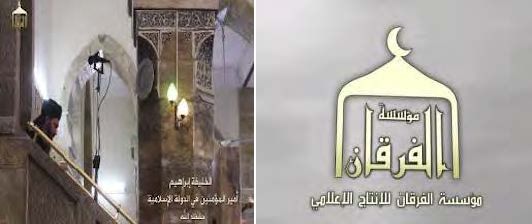
Left: Abu Bakr al-Baghdadi delivers a sermon at a mosque in Mosul. The Al-Furqan logo is the upper left hand corner (YouTube). Right: The Al-Furqan logo. It reads, “The Al-Furqan Institute for Media Production.”
- The Al-I’tisam Media Foundation — Al-i’tisam means “sit-in,” or “request for protection” (in this case, from Allah). It is a production institution that has made and distributed propaganda videos for ISIS for the past two years.
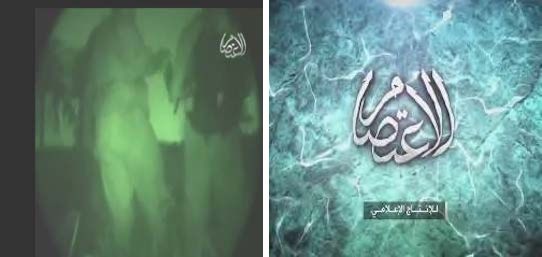
Left: Documentation of nighttime mortar shell fire in Diyala province in Iraq. The video was produced by the Al-I’tisam Media Foundation. Right: The Al-I’tisam logo.
- The Alhayat Media Center — The Alhayat Media Center is relatively new and targets mainly Western audiences. It produces and apparently also distributes a great deal of propaganda material, including videos. One of its objectives is to recruit new members in the Western world by distributing diverse materials in several languages, including new videos and subtitles for existing videos, and also articles, news reports, and translated jihadi materials.
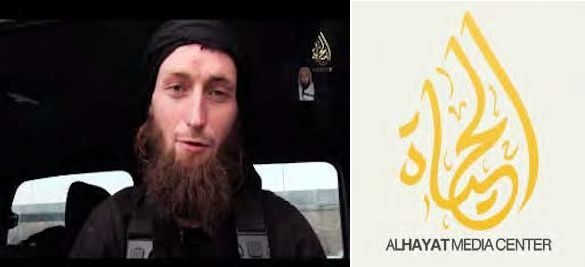
Left: An Alhayat Media Center production of a Germanspeaking ISIS spokesman praising Abu Bakr al-Baghdadi’s Islamic State (Plus.google.com). Right: The Alhayat Media Center logo, similar to Qatari Al-Jazeera’s logo (Alplatformmedia.com)
- The Ajnad Media Foundation — ISIS launched the Ajnad Media Foundation in January 2014. It specializes in broadcasting jihad songs and Islamic vocal music.
ISIS online magazines
ISIS has several Internet magazines:
- Dabiq — The Alhayat Center published the first issue of Dabiq,[108] an Englishlanguage magazine, on July 5, 2014, entitled “The Return of Khilafah.” The second and third issues were published in September 2014, and the fourth on October 12, 2014. Some of the articles in the fourth issue were the following: quotes from Abu Bakr al-Baghdadi and other past and present senior ISIS figures; a discussion of the hadith (part of the oral tradition) explaining that it was legal to take booty from war because Allah authorized it; justification for enslaving the Yazidi with hadiths on slavery; information about military and administrative actions taken by the Islamic State; the so-called failures of the American campaign against the Islamic State; a call to kill “Crusaders” (i.e., Western civilians) in every country that joined the alliance against the Islamic State, and to target “citizens of the Crusader countries” wherever they might be found; justification for the execution of the American correspondent Steven Sotloff.
- Islamic State News (ISN) — The Islamic State News is also an online magazine targeting audiences outside Syria and Iraq. It publishes Salafist-jihadi opinion pieces. It also gives updated reports in English and other languages about the organization’s activities. ISIS also posts the Islamic State Report (ISR), which has articles about events and the organization’s agenda.
Forums and Internet sites
ISIS recently launched an official Arabic-language forum called Al-Minbar Al-‘Ilami Al-Jihadi.[109] It posts notices, videos, pictures and information about ISIS. ISIS also has the Hanein.info forum which posts pictures, articles and videos (at the beginning of November 2014 Hanein.info was inactive; it may be reactivated).
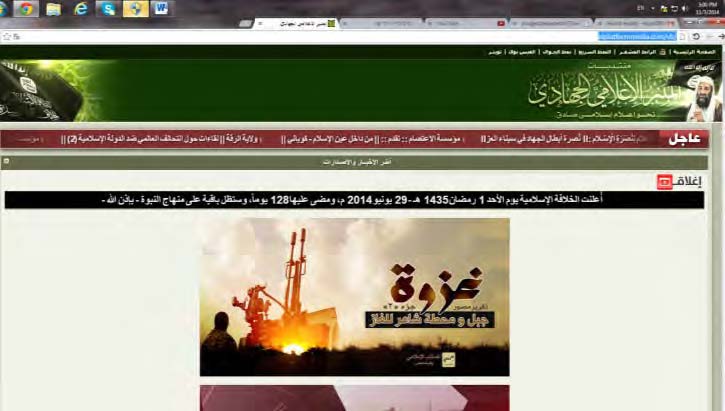
The Al-Minbar Al-‘Ilami Al-Jihadi forum’s homepage. A picture of Osama bin Laden is at the right and an ISIS flag is at the left. The lower inscription reads, “The Islamic State — The Caliphate of the straight path.”
ISIS has a site for visual materials, with a mirror site.[110] It has videos dealing with ISIS’s ideology, its founders (Abu Musab al-Zarqawi, Abu Omar al-Baghdadi, Abu Hamza al-Muhajir) and its current leader, Abu Bakr al-Baghdadi. It also has videos commemorating ISIS operatives who were killed and various types of propaganda.
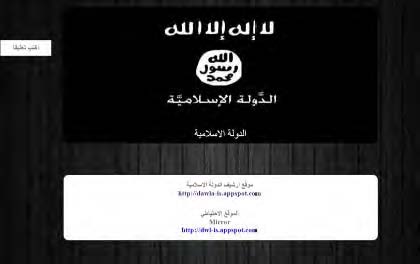
Website for Islamic State visual materials can be had at Dwi-is-appspit.com. The site’s founders assumed the site would have so much traffic they created a mirror site.
The West and Muslim communities in the West as important target audiences
ISIS makes intelligent use of the Internet, especially the social networks, to send messages to specific target audiences. Most important to ISIS are the Western countries and their Muslim communities. Intensive propaganda aimed at them is intended to deter the West from attacking ISIS; increase the image of the organization’s strength; frighten Western public opinion; spread ISIS’s jihad ideology to the Muslim communities in the West and encourage foreign fighters in Western Muslim communities to enlist in the ranks of ISIS. Its propaganda activities include posting notices, videos, audio messages and pictures. So far its strategy has been very successful and it has positioned itself as the West’s number one enemy and gained support from the Arab-Muslim street, jihadi organizations and Muslim communities in the West.
The social networks, especially Facebook and Twitter, play an important role in ISIS’s propaganda activity in the West.[111] ISIS exploits its military successes, such as its victories in northern Iraq and the executions of its rivals and Western abductees, for propaganda to frighten and deter the West and to recruit foreign fighters. Its propaganda demonized ISIS in Western public opinion and played an important role in setting the stage for the campaign against ISIS initiated by the United States and its allies.
As a result of publicizing ISIS’s violence and atrocities, its Facebook and Twitter accounts were closed, cutting it off from one of its main channels for spreading its propaganda. That forced it to look for new ways to disseminate its propaganda. It turned to less popular social networks, such as VK[112] and DIASPORA.[113] Both of them are in competition with Facebook, and supervision of their contents is less strict. ISIS also uses other, less popular websites.
Examples of ISIS postings to Western audiences
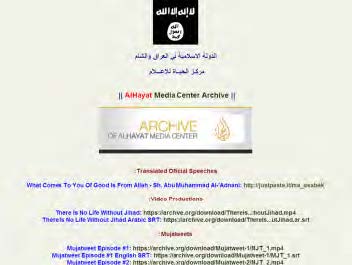
Advertisement for an Islamic forum “archive” offering propaganda material, including material preaching jihad, translated into English by the Al-Hayat Media Center
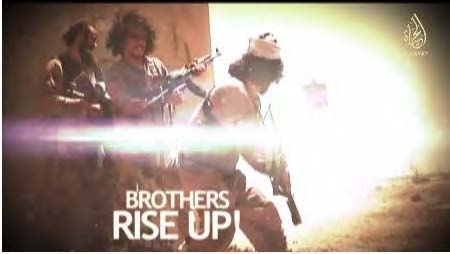
On June 17, 2014, Al-Hayat Media Center issued a vide with a song called “Let’s wage jihad” (MEMRI.org, June 21, 2014)
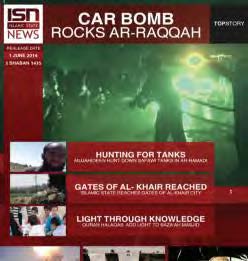
The Islamic State News for July 1, 2014, glorifies ISIS’s achievements. It is posted on Al-Qaeda-affiliated Islamic forums (Ia902506.us.archive.org)
One example of encouraging members of Muslim communities in the West to join the jihad is an ISIS video posted on Islamic forums and YouTube in June 2014. An Australian who calls himself Abu Yahya al-Shami (apparently recently killed in Syria) appears in it. Abu Yahya al-Shami is apparently Zakaria Ra’ed, who was detained with three other extreme Islamists for beating a civilian in Sydney (claiming he used drugs and alcohol). In the video he called on Muslims to wake up to the humiliation the Muslims experienced in Palestine and Fallujah. When he finished speaking a masked operative called Abu Nour al-Iraqi, who according to the video was also an Australian, called on the Muslims in Australia, Europe and America to join the jihad in Syria.
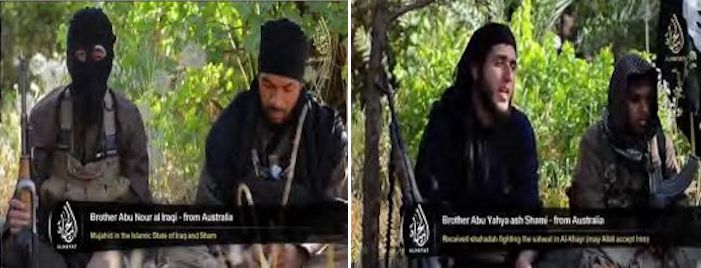
Left: Brother Abu Nour al-Iraqi (left) calls on Muslims in Australia, Europe and American to join the jihad in Syria. Right: An Australian nicknamed Brother Abu Yahya al-Shami records a message.
The campaign for the support of Muslims around the globe (2014): “A billion Muslims support the Islamic State”
Since ISIS’s military achievements in the summer of 2014 and the declaration of the Islamic Caliphate ISIS had enjoyed support and solidarity in the Arab-Muslim world and the West. It is leveraging its achievements to increase its support in the Arab-Muslim world and in Muslim communities in the West with a media campaign to encourage enlistment in its ranks.
On June 19, 2014, ISIS began a campaign called “A billion Muslims support the Islamic State.” It called on its supporters around the globe to show their solidarity, suggesting they use Twitter accounts. Following the campaign ISIS posted a video to YouTube documenting the tweets sent from the West, the Arab world and Asia (Ukhuwa website, YouTube, June 21 and 23, 2014). Some of the tweets were the following:
The Middle East
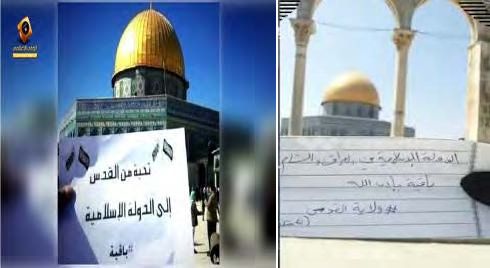
Left: Support for ISIS on the Temple Mount (YouTube, June 23, 2014). Right: The note reads, “The Islamic State in Iraq and al-Sham remains firm. Occupied al-Quds province (wilaya) (YouTube).
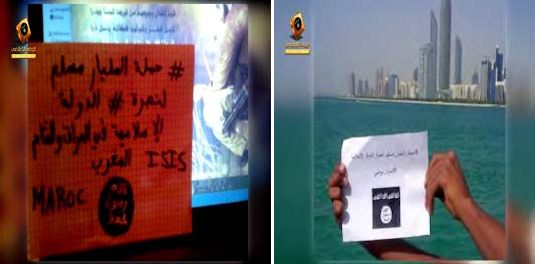
Left: Support for ISIS in Morocco (YouTube, June 23, 2014). Right: Support for ISIS in Abu Dhabi (YouTube, June 23, 2014)
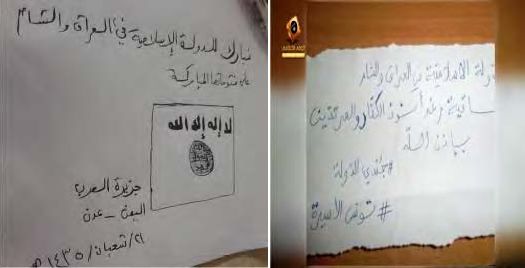
Left: Support for ISIS in Aden, Yemen (Ukhuwa website, June 21, 2014). Right: Support for ISIS in Tunisia (YouTube, June 23, 2014)
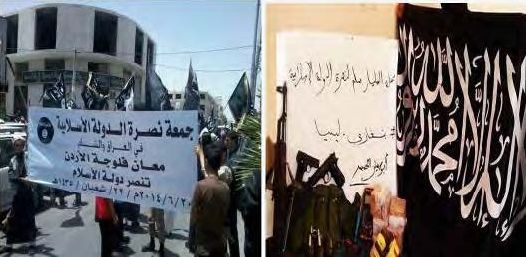
Left: Support for ISIS at a rally held on June 20, 2014, in Ma’an, Jordan, (Ukhuwa website, June 21, 2014). Right: Support for ISIS in Benghazi, Libya (Twitter account of the “Billion Muslims for a Muslim state, June 22, 2014)
Europe
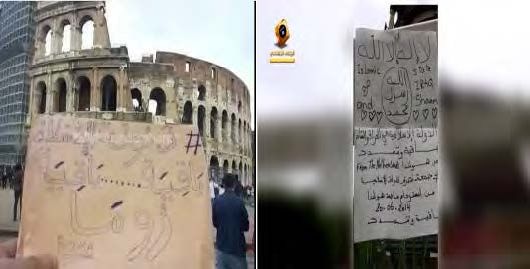
Left: Note reading “The Islamic State remains firm, Rome,” with the Colosseum in the background (YouTube). Right: Support for ISIS in Amsterdam (YouTube, June 23, 2014)
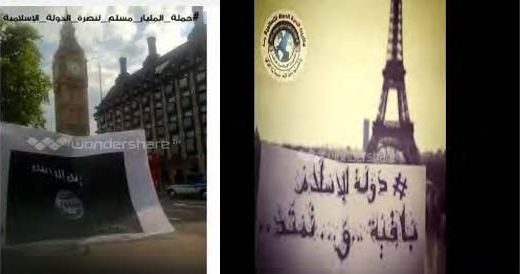
Left: ISIS flag with Big Ben in the background (YouTube). Right: Note reading “The Islamic State remains firm…and expands” with the Eifel Tower in the background (YouTube)
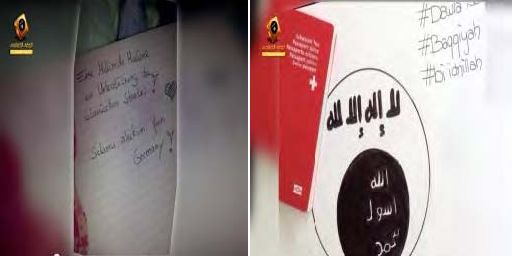
Left: Support for ISIS in Germany (YouTube, June 23, 2014). Right: Support for ISIS in Switzerland (YouTube, June 23, 2014)
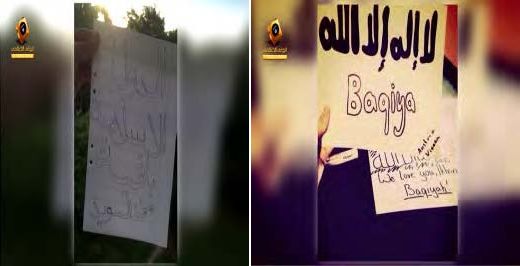
Left: Support for ISIS in Sweden (YouTube, June 23, 2014). Right: Support for ISIS in Vienna (YouTube, June 23, 2014)
The United States
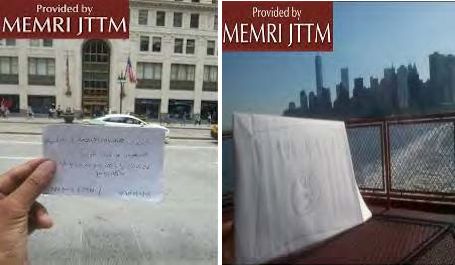
Left: A note supporting ISIS with downtown Chicago in the background (MEMRI.org, June 30, 2014. The photo originated in a Twitter account, June 20, 2014). Right: Support for ISIS with the Lower Manhattan, skyline in the background (MEMRI.org, June 30, 2014. The photo originated in a Twitter account, June 20, 2014).
Asia
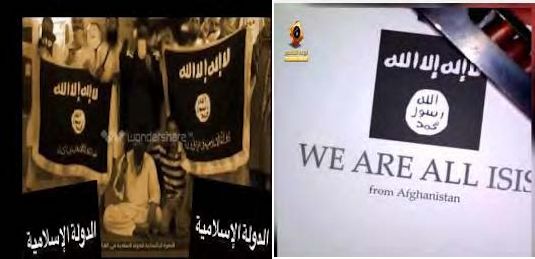
Left: Pakistanis support ISIS with a notice about the establishment of the Islamic State, headed by Abu Bakr al-Baghdadi (YouTube). Right: Support for ISIS in Afghanistan (YouTube, June 23, 2014)
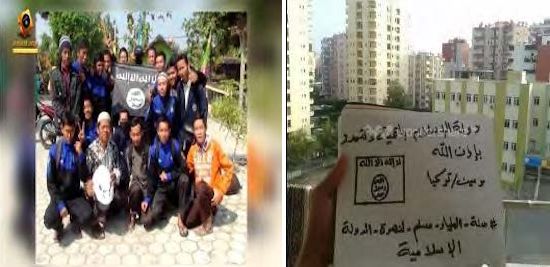
Left: Support for ISIS in Cambodia (YouTube, June 23, 2014). Right: Support for ISIS in Turkey reading, “The Islamic State remains firm and expands, with the help of Allah — Operation A Billion Muslims in Support of the Islamic State” (YouTube)
![]()
[1] Links to all other nine sections:
You can read the overview — “ISIS: Portrait of a Jihadi Terrorist Organization” — here.
You can read section 1 — “The historical roots and stages in the development of ISIS” — here.
You can read section 2 — “ISIS’s ideology and vision, and their implementation” — here.
You can read section 3 — “ISIS’s military achievements in Iraq in the summer of 2014 and the establishment of its governmental systems” — here.
You can read section 4 — “ISIS establishes itself in eastern and northern Syria” — here.
You can read section 5 — “ISIS’s capabilities: the number of its operatives, control system, military strength, leadership, allies and financial capabilities” — here.
You can read section 6 — “Exporting terrorism and subversion to the West and the Arab world” — here.
You can read section 8 — “The American campaign against ISIS” — here.
You can read section 9 — “ISIS response to the American campaign (update to mid-November 2014)” — here.
![]()
Notes:
[108] According to a hadith attributed to Abu Harairah, one of the companions of Muhammad, a decisive battle is supposed to be held between the Muslim and Christian armies in the city of Dabiq in northern Syria, where the Muslims will be victorious. “…the reference is to a hadith often quoted by Abu Musab alZaqawi [sic] that predicts Dabiq as the place where Islam will win a great victory over the infidels, so leading to world domination and the end of times” (Barrett, “The Islamic State,” p.61).
[109] Alplatformmedia.com/vb
[110] dawla-is.appspot.com
[111] “New ISIS Media Company Addresses English, German And French-Speaking Westerners,” (MEMRI.org, June 24, 2014).
[112] A social network launched in 2006. It is the largest in Europe and especially popular with Russian speakers. As of 2014, more than a hundred million people use it.
[113] A social network launched in 2010, unique in its user protection. It allows the user to define a server for its material and also installs a private server, making inspection of the network’s contents less strict.



 RSS
RSS

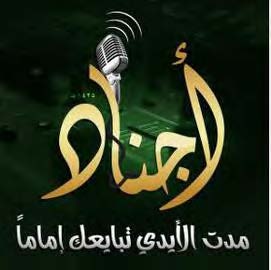


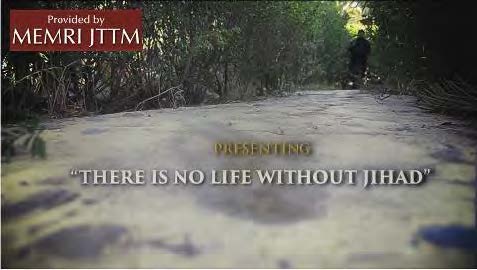
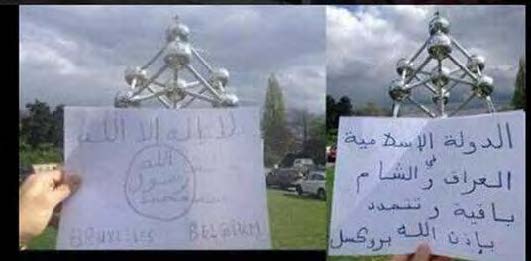
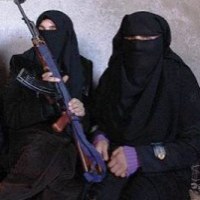








Latest Comments
Hello Mike, Thank you for your positive feedback to the article. I felt there wasn’t too much critical analysis of ...
Thanks for this considered and well constructed article. A follow up article on the manner in which the editorial contro...
THE CLUELESSNESS OF CLAIMING THAT OBAMA'S MIDDLE EAST POLICIES WERE A FAILURE CANNOT BE FURTHER FROM THE TRUTH, WHAT THE...
As long as Obama is the president of the usa do not trust the us government......
Thank you for an good read....